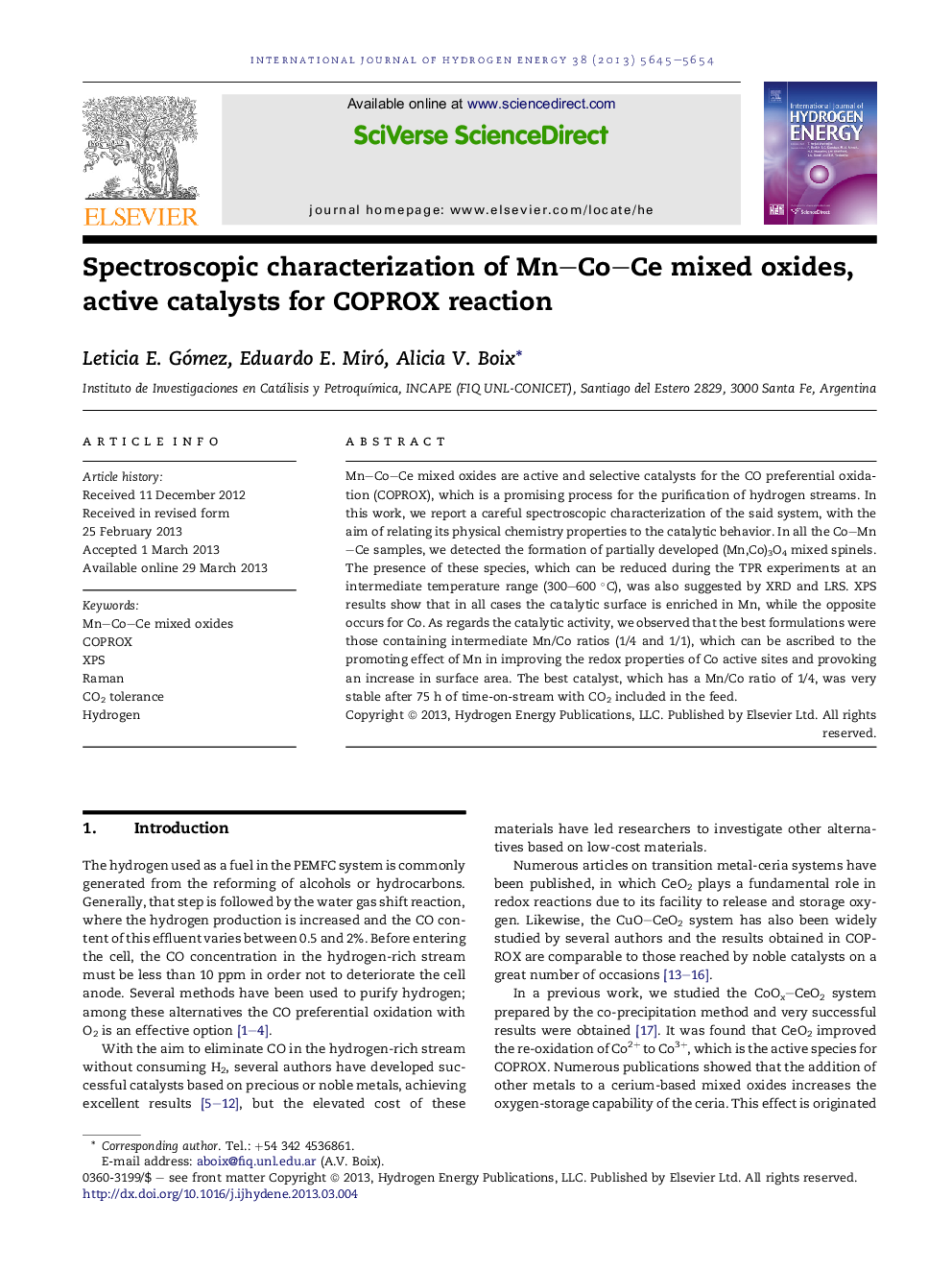| Article ID | Journal | Published Year | Pages | File Type |
|---|---|---|---|---|
| 1281673 | International Journal of Hydrogen Energy | 2013 | 10 Pages |
•Mn–Co–Ce catalysts were active, selective and stable for the COPROX reaction.•MnCoCe(1/4) was very stable after 75 h of time-on-stream with 20% CO2 in the feed.•Low Mn content increases surface area and promotes the catalytic activity.•The incorporation of Mn improves Co redox properties in the catalysts.•The formation of a (Mn,Co)3O4 mixed spinel was suggested.
Mn–Co–Ce mixed oxides are active and selective catalysts for the CO preferential oxidation (COPROX), which is a promising process for the purification of hydrogen streams. In this work, we report a careful spectroscopic characterization of the said system, with the aim of relating its physical chemistry properties to the catalytic behavior. In all the Co–Mn–Ce samples, we detected the formation of partially developed (Mn,Co)3O4 mixed spinels. The presence of these species, which can be reduced during the TPR experiments at an intermediate temperature range (300–600 °C), was also suggested by XRD and LRS. XPS results show that in all cases the catalytic surface is enriched in Mn, while the opposite occurs for Co. As regards the catalytic activity, we observed that the best formulations were those containing intermediate Mn/Co ratios (1/4 and 1/1), which can be ascribed to the promoting effect of Mn in improving the redox properties of Co active sites and provoking an increase in surface area. The best catalyst, which has a Mn/Co ratio of 1/4, was very stable after 75 h of time-on-stream with CO2 included in the feed.
Graphical abstractFigure optionsDownload full-size imageDownload as PowerPoint slide
